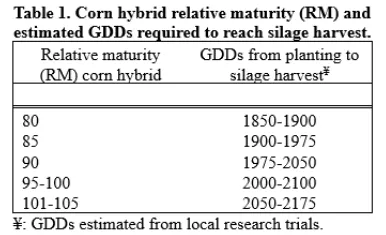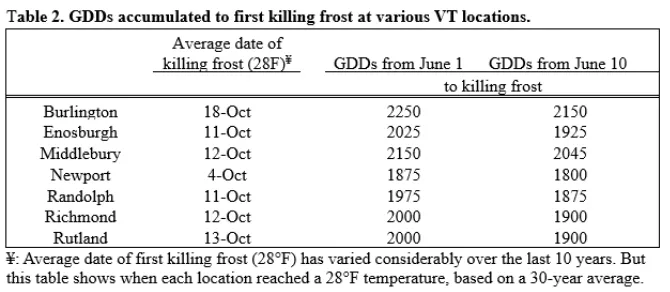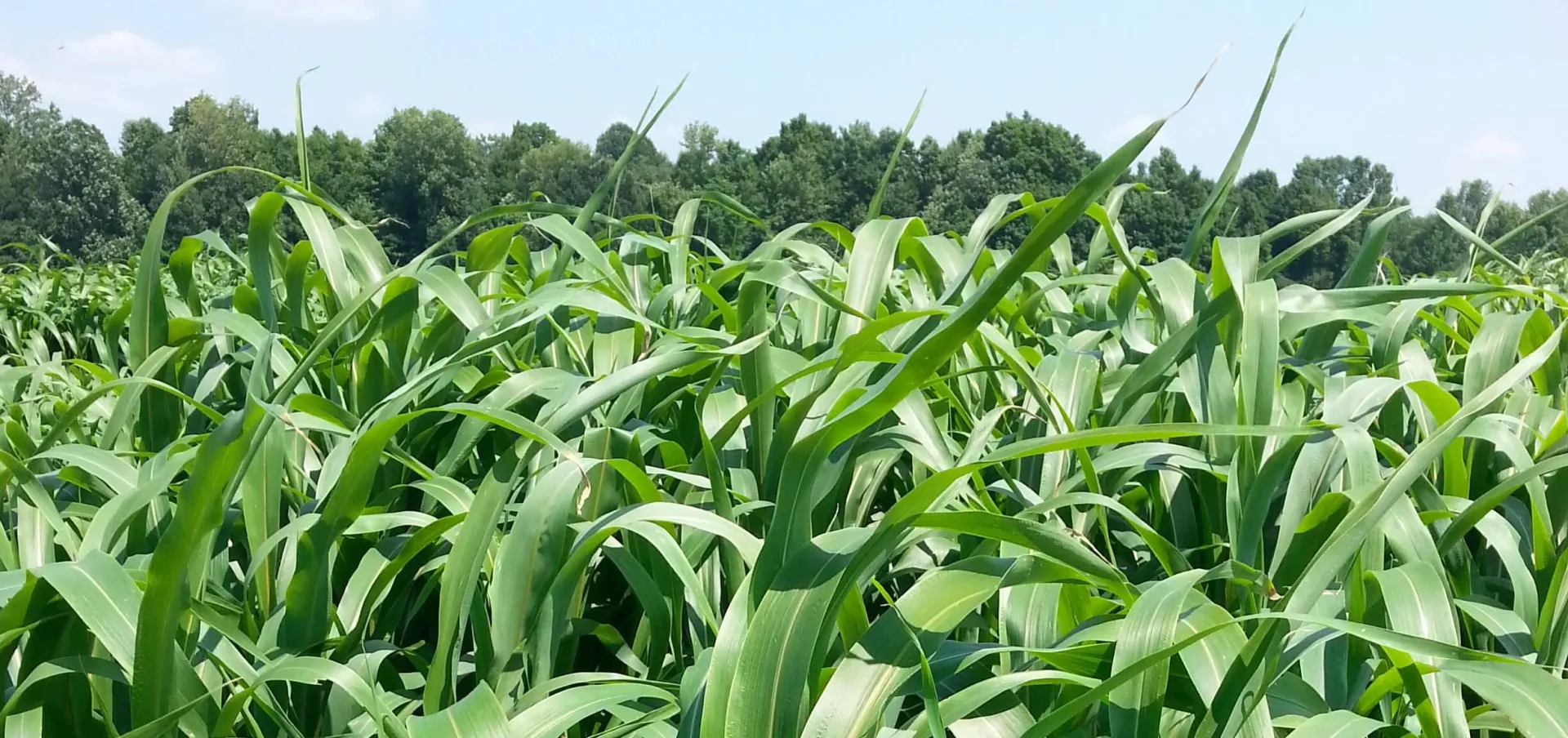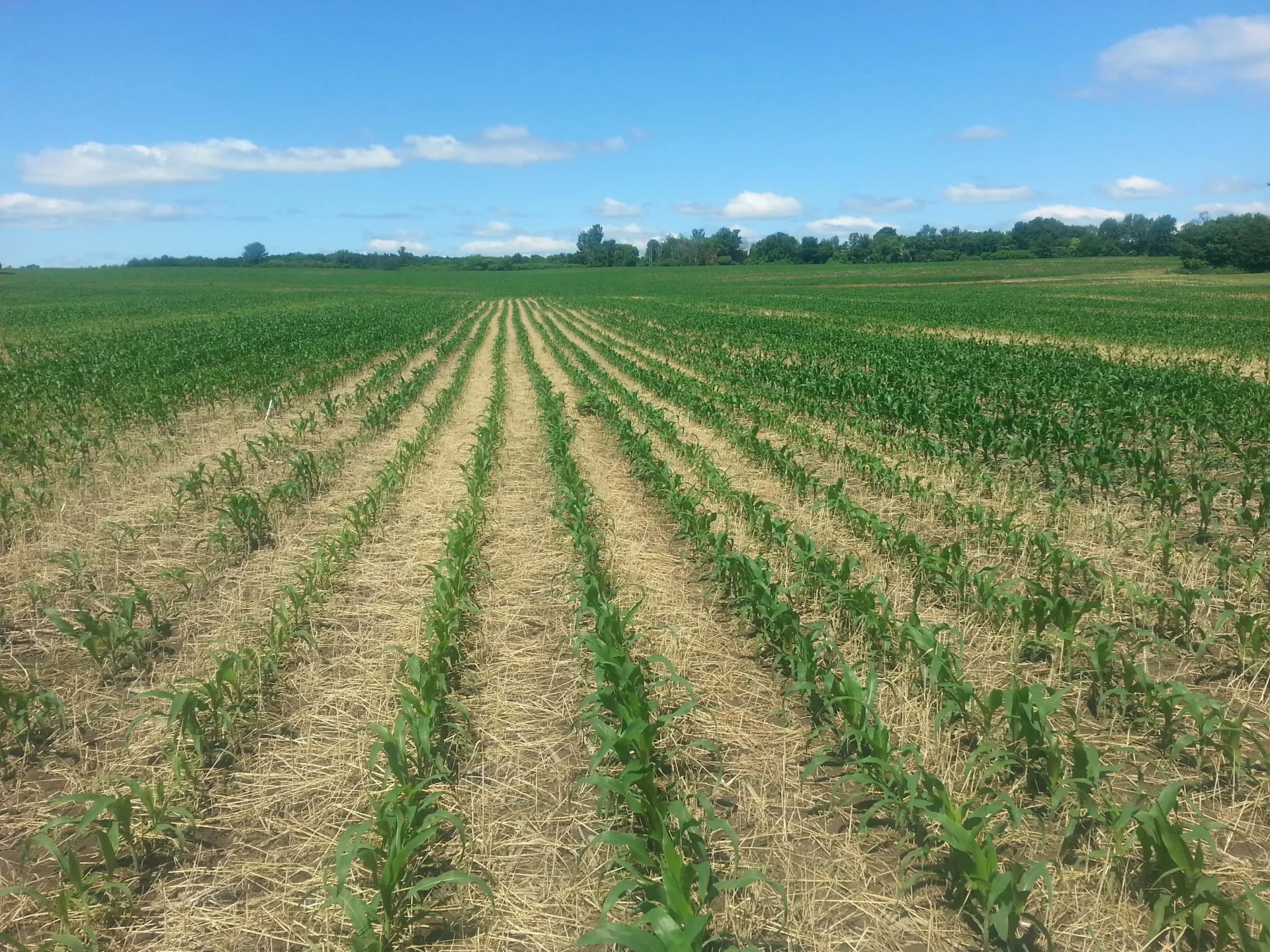Given the delayed planting of corn due to wet and in many cases saturated soil conditions, farmers are asking, “What relative maturity of corn will be harvested before the first killing frost?” Well, as always, the answer is, “It depends.”
As we head into the last week of May, there are competing priorities: harvesting first cut grass and getting crops in the ground. Grass harvest should come first, so you can try to salvage optimal quality. This means corn will most likely be planted in early June. The good news is that most of the growing degree days (GDDs) occur between June and August, so the best part of the growing season is yet to come. The challenge is making sure you select a corn variety that will mature and be ready to harvest before the first killing frost (28°F).
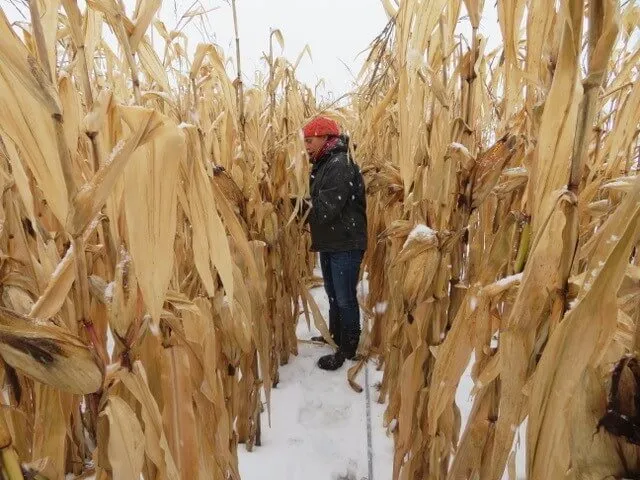
Generally, once we get to May 25, farms should be shifting away from long-season and over to shorter-maturity corn. However, long-season corn is relative to your location in VT. If you normally plant 100-day or even later-maturing corn, it is time to reduce the maturity by between 4 and 7 days. Once we are in early to mid-June, consider another reduction in maturity.
Again, location is important. The goal is to get the corn in the ground, have it emerge as quickly as possible, soak up 1,800 to 2,500 heat units, and be ready to chop by late September to early October. The length of the growing season of various hybrids is directly related to their GDD requirements: Long-season hybrids require more GDD to reach maturity than shorter-season hybrids. Several studies in the Midwest documented an increase of 22 GDDs per day for every day increase in relative maturity (RM). If you reduce the RM by 7 days, that hybrid requires an estimated 154 fewer GDDs to grow. That is about equal to the number of GDDs accumulated in 2 to 3 weeks in the fall.
Most companies rate their hybrids by RM, not GDDs. The relationship between RM ratings and GDD ratings within any given company's hybrids is close but not exact because each rating system relies on a different methodology (relative vs. thermal time) and different "end points" to the growing season (silage maturity vs. black layer). If two hybrids require the same number of GDDs to reach physiological maturity (silage maturity) but their rates of post-maturity field dry down differ, they may be assigned the same GDD rating but different RM ratings. Neither method is exact because of the influences of climatic conditions and plant stress on crop development rates and dry down in the field.
Therefore, the difference in corn company hybrid GDD "ratings" between two otherwise similar genetics could be about 120 GDDs equal to the heat units typically required for corn to emerge after planting. So, at the end of day, consult with your corn dealer. The RM comparisons within a seed company's hybrid lineup are more reliable than RM comparison between hybrids of different seed companies. If the corn dealer can provide GDDs required to silage maturity, you can estimate whether the corn variety will be harvested prior to a killing frost.
If that data is not available, the tables below provide information on estimated GDDs required for hybrids of different RMs, as well as the GDDs accumulated in various locations in Vermont from June 1 to the average date for the first killing frost. These are estimates, and clearly we do not know what type of weather the remainder of the season will bring. However, hopefully these estimates can help you gauge what corn RM will be best suited for planting in June.
